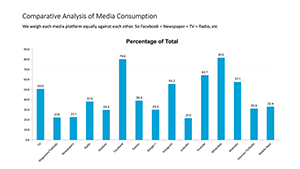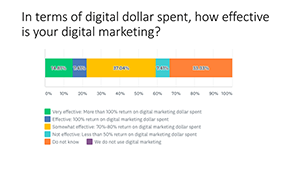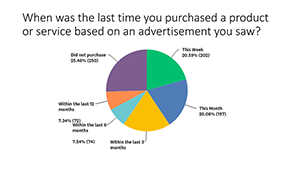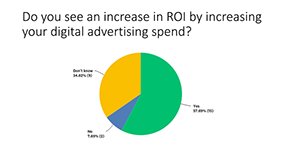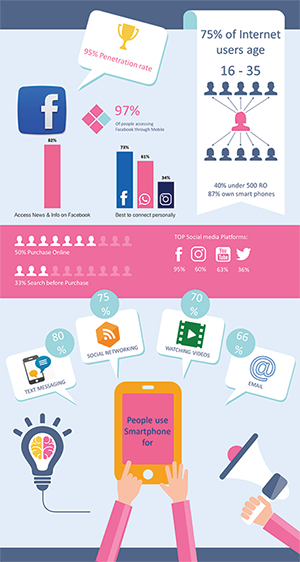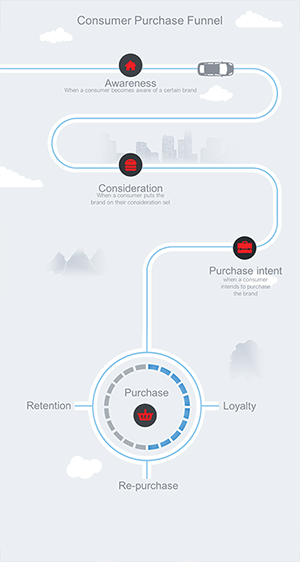Innovation is the key
The exponential growth of digital and social media is not merely redefining the advertising landscape in Oman but is forcing every other media to adapt a digital-first mindset. A Mediate report
Without sounding too self-righteous, Mediate was probably the first one to sight the shift in reader and consumer preferences from traditional media like newspapers to digital and social media platforms (Refer to the introductory article, titled ‘An incomprehensible gap’, in Mediate 2014). The publication predicted the crying need for advertisers and agencies to change their mindsets or risk losing customers as the latter had already moved on to new platforms and media. And haven’t we proved to be right and how!
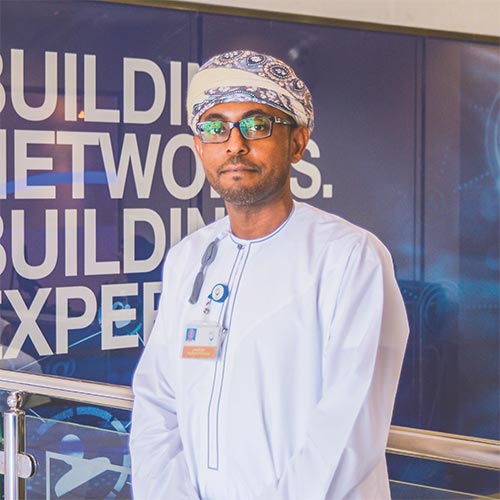
Haitham Abdullah al Kharusi
Vice President, Consumer Business Unit, Omantel
According to Orient Planet Research, social and digital media advertising spends in the GCC grew by 20 per cent in 2017 and internet advertising spending is expected to grow at a compounded average rate of 11.9 per cent till 2020. The reason for this is apparent – the report estimates that there are close to 197 million internet users in the Arab world. Second, the ubiquitous use of smartphones is encouraging users to access information, read news and surf.
The other major trend at work is the growing sophistication of online advertising. Gone are the days of a one-size-fits-all approach. Given the data being collected by social media platforms, ads can be aimed at them with a certain amount of accuracy and precision unlike analogue media.
Despite the obvious benefits of social and digital advertising, these mediums have their own set of challenges like fake followers, uncertainty about the effectiveness and reach of ads and short attention spans. Despite the challenge from new media, newspapers still corner a large share of the advertising pie, probably because they lend an air of credibility to brands and enjoy the legacy of being a tried and tested medium.
According to global market research and consulting firm IPSOSS, while newspaper advertising in Oman came down by 23 per cent in 2016 compared to 2015 to RO58.56 million, they still accounted for a staggering 76 per cent of the market compared to 8 per cent spending on outdoor, 6 per cent on television, 5 per cent on radio, 4 per cent on magazines and 2 per cent on cinema (See table on Oman adspend for details).
Explosive growth
The fall in oil prices since the last quarter of 2014 led to a precipitous slump in marketing and communication budgets. This has accentuated the shift towards digital and social media as clients have been on the lookout for more bang for every buck of marcom spending. Says Haitham Abdullah al Kharusi, Vice President, Consumer Business Unit, Omantel: “The increasing prevalence of digital is related to smartphone penetration. Oman is coming very close to 100 per cent smartphone penetration and as a result customers can access information on applications as and when they need without actually using more traditional mediums. There is where the focus will be for brands like Omantel and others in the future.”
Like Omantel, a number of companies in Oman have moved to the digital space with a lot of emphasis on digital applications to engage and raise awareness among customers. For example, banks and financial service companies as well as telecom service providers have gone big on apps. This is expected to cascade to FMCG, electronics and other industries as the growing adoption of digital media becomes more effective. Says Hussain al Lawati, Managing Director, Omasco: “Digital will continue to grow. We need to think out of the box, get acquainted and connected with the customer and become a lifestyle story. Theming is important as that’s what the consumer is looking at.”
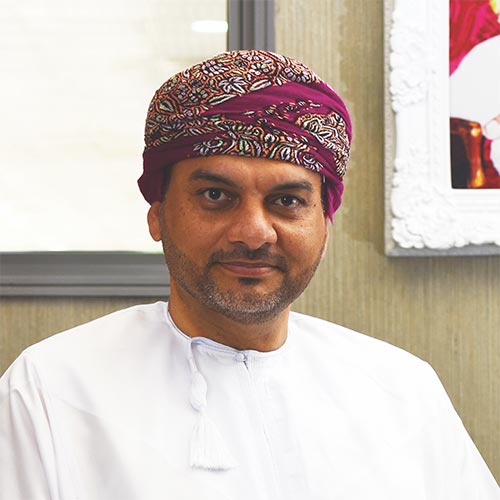
Hussain al Lawati
Managing Director, Omasco
Telecom, automotive, retail and airlines are leading the pack in tapping the new opportunities in Oman, but not all sectors are just as savvy when it comes to digital media. However, all are shifting their focus to digital platforms. The reasons for this are pretty apparent – advertisers can reach their target audience faster and more frequently. Moreover, the target audience can be filtered and specified; deeper and wider penetration is possible compared to that of any other medium currently available; there is better measurability; and it is all cheaper compared to the traditional print media.
Social influencing and word-of-mouth too have started playing a bigger role. Influencer-led marketing activations as well as online campaigns have seen a quantum growth. With robust reporting, it’s possible to track the entire user journey, right from a website view to a click and leads.
Says Luiza Fernandes, Director -Digital & Business Development, Talks International: “I believe it’s always about the audience, and where and how they choose to communicate with your brand. A brand needs to put their best foot forward in front of their most engaged audiences. Hence, the user journey, from offline to online, is the biggest enabler. That, combined with insane developments in technology, such as automated marketing and digital and social tools and adoption of global platforms, makes it a world of endless possibilities.” Says Haitham: “We have been changing our operating model to keep up with the digital disruption that is happening and what I mean by this is that we are getting people and finances into relevant areas which are going to help sustain our strong brand position. We have strengthened our digital team by recruiting the relevant resources who understand social and digital media.”
Adspend has gone down across the board due to a variety of reasons. For example, the automotive industry has seen a 30 per cent reduction in business in 2017 compared to that of 2016, affecting ad spending. Says Hussain: “We look at whether we should spend RO300 on print advertising or go for radio, digital, video content and make it viral. We are working on an interactive website and have put digital really on the top of our priority list.”
Teething troubles
Despite the traction in the digital and social media space, the field is far from mature in Oman. Companies and agencies are unable to slice and dice the market to suit the needs of a specific brand, being usually swayed by numbers. HH Mayya Al Said, a social media influencer, avers: “There is a lack of awareness and understanding regarding what one is trying to sell or advertise, and numbers are not always a good indication. Many followers may mean that someone is being followed for the wrong reasons, while someone with a smaller number of followers may be putting out good content. You have to see what kind of brands need to associate with whom.”

Her Highness Mayya Al Said
Social media influencer
Apart from this, there is a question mark on the credibility of followers as there seems to be a marketplace where followers can be purchased to boost one’s profile with fake or irrelevant fans. “Unfortunately, numbers can be fudged as people are buying followers. Advertisers think that they will be in a better position if they use an influencer with a larger following. Instagram knows that this is happening and they periodically cut off such scammers and it looks bad on the person. Like anything in life, gradual growth is the way to go and it applies to digital as well,” adds HH Mayya. Aware of such dangers, companies in Oman have been putting in place teams of social media specialists who help filter sites and influencers with real followers versus fake ones.
There are others that dispute such reasoning as digital media offers transparency and multiple means of accessing data and numbers, either via Google Analytics, Facebook and Twitter Insights, or advanced solutions like Omniture. Says Luiza Fernandes, Director-Digital & Business Development, Talks International: “It’s a matter of investing in the right resources to bring you the accurate and actionable insights. Hence, I don’t see why smart marketers would question the credibility of digital platforms. In fact, I see this lacking for offline channels, which are rarely audited or backed by any global or regional external-verified sources.”
The sudden explosion of digital media has led to the mushrooming of mom-and-pop shops or boutique agencies that profess to offer best-in-class solutions at throwaway prices. Unfortunately, a number of companies — unsure about the way to go about new media platforms — get lured into their trap, regretting later. Nicolas Labban, General Manager, Havas Muscat, says: “This is a very normal and natural situation, especially in tough times. The full solution that we provide cannot be sourced through a boutique or ‘cowboy’ agency. We are very confident of the value we bring to the brands through the service we offer and the quality we maintain, and these market intruders are for just interim periods.” Market analysts aver that the same situation has been witnessed before in Oman and the larger agencies will outlast such outfits in the long run.
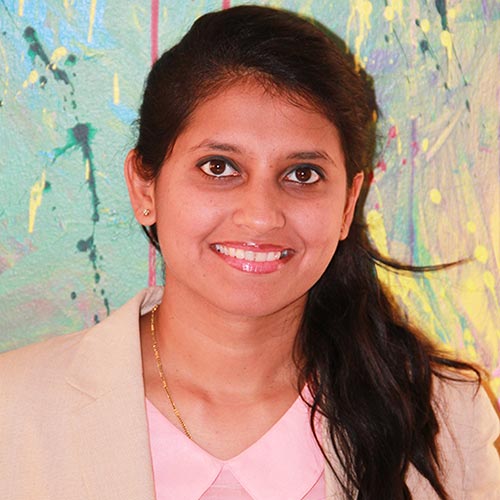
Luiza Fernandes
Director – Digital & Business Development, Talks International
Despite consumers spending a lot of time on smartphones, there are reservations about the sites which attract eyeballs with Facebook, Instagram and Twitter leading the race by a margin. There are few local websites which are popular or in a position to attract advertisement from the local market. Says Alpana Roy, Executive Vice President, UMS: “We live in a digital society and we do know people in Oman not only access local websites and online platforms but also websites of their choice from across the world. Digital tools like Google Ads enable us to place our messages and promotions targeting these audiences. No wonder, Google and Facebook already control 50 per cent of the global digital adspend.”
Says Nicolas: “While we absolutely believe in the power of creative communication no matter the medium, digital and social media have the measurability metrics that can be utilised efficiently to deliver this interactive added-value solicited by clients today. However, in Oman, and when it comes to the online media providers, most publishers are limited with their inventories and platform-side technologies.”
It is a fact that digital media has invaded the Omani market just recently and most companies here are not willing to invest in a field they are not much aware of. In spite of such drawbacks and challenges, Oman is definitely on the fast track to catching up with its regional peers. It might not be the highest tracking market in terms of digital innovations, but market interactions clearly indicate that marketers and brands are more than willing to make the transition to a robust digital presence within the next couple of years.
Evolving graph
While the shift towards digital and social media has been nothing less than drastic, advertisers think that agencies in Oman have been unable to offer best-in-class solutions, not utilising clients’ marketing and communication budgets to the fullest. Says Haitham: “The role of marketing and communication has not evolved much and the reason why that is the case is because of the environment and how advertising and marketing is managed in Oman, the assets that are available and the profile of users — more of an immigrant population than local compared to other places.”
Companies insist that they want to see the effectiveness of marcom spending to improve in Oman, and this requires a collaborative effort between various parties. Clients who have used traditional media for years have a better understanding of the equivalent value of advertising when it comes to outdoors, newspapers, magazine as they give you a rate card and a specific price, compared to digital and social media.

Nicolas Labban
General Manager, Havas Muscat
Media entities across categories — be it print, television, radio or outdoors — still see their present role as merely carrying advertisements of clients. But as media options increase and social media with its interactive nature grows, companies and clients are looking for enhanced value addition and solutions from the media. Says Haitham: “My advice to companies is that their marcom should become more relevant. We are trying to become more relevant but agencies and media are not making an effort. There is lethargy in this area, seldom are media and agencies looking for opportunities to offer a differentiated offering for customers. The advertising industry is evolving as consumers are pushing… my concern is that they are not being progressive enough.”
Agencies on their part point out that many clients in Oman are in the preliminary stage of having a full, meaningful online presence and agencies have to continuously educate them about the proven benefits of transmedia and relentlessly push for a more systematic approach to data and analytics.
Print media
The shift towards digital has forced established print entities to strengthen their digital proposition. Says Alpana: “We have been investing in digital platforms as we strongly believe that digital marketing is an integral part of the overall marketing and communications solutions. We have launched digital and social media channels for all our print brands and currently are in the process of strengthening them to attract and compel our loyal readers to engage through these channels.”
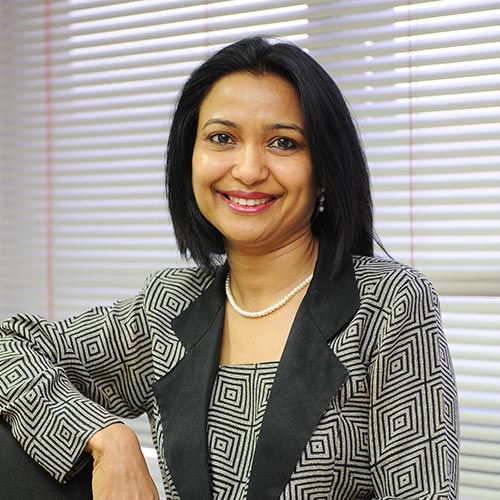
Alpana Roy
Executive Vice President, UMS
Ironically, though there is a shift towards digital and social media, print advertising is still dominant in Oman and many clients want their communication to be seen in the print media. “Hence, ideally a communication plan that combines print and social media ensures the best results for the marketing budget, and our business team is adept at offering these combined solutions to our clients,” adds Alpana. The growing competition from digital media and plummeting ad revenues have led to the closure of many publications over the last couple of years or so.
Given the shifting dynamics of the market, clients are open to experiment with new modes of advertising. Says Haitham: “Marcom has a bigger role when it comes to contextual marketing, location-based marketing and event-based marketing and all this comes under marketing and so we do not split events and sponsorships from marketing.” In a country like Oman when people gather in common places, the opportunity to do advertising in those places or reach out to customers through the perception created by the marcom is a medium that is being used by advertisers. “We can have much more effective reach compared to digital if we arrange, for example, six events in each of the key governorates to raise awareness about a product, service or a launch, because word-of-mouth is very prominent here and it is effective and cost effective,” adds Haitham.
A complementary medium
Over the last one year, JCDecaux Oman started the implementation of the second phase of its street furniture programme with Muscat Municipality, reinforcing coverage in key areas and extending the presence to areas in town that were not covered before (like Al Khoud and Al Mabela). The company is also close to completing its airport advertising offer for the new Muscat Airport development project.
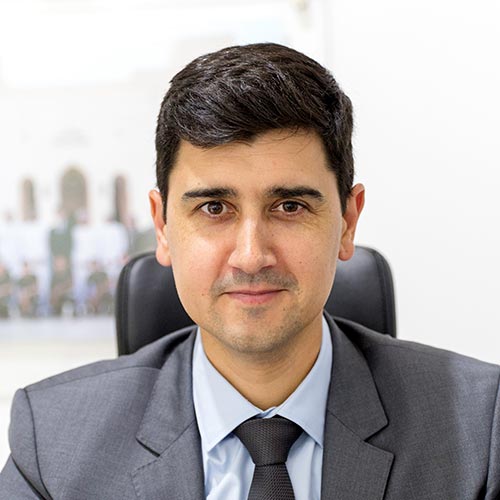
Sebastien Soares
Managing Director, JCDecaux Oman
There are still some areas in Oman where outdoor advertising is cluttered and not at the level of quality that advertisers deserve. Having said that, one can clearly see some improvements happening and the new regulations implemented along with the new tenders, combined with easy access to new technologies, are encouraging outdoors in Oman.
Says Sebastien Soares, Managing Director, JCDecaux-Oman: “The potential of Oman’s outdoor advertising market is clearly limited but there is still room for growth. Oman is a small market compared to its regional peers and, therefore, it will remain dependent on local advertisers. But a growing urban population, the development of the country and diversification of the economy should generate more demand in terms of communication that the outdoor business should benefit from.”
The biggest challenge to outdoor advertising in Oman is the lack of availability of data in the market. Nowadays, especially with the boom of digital media and the strengthening of the global economy, advertisers are looking at a direct return on investment. As a result, they focus more on the price than the real value of what they are getting. Therefore, they demand data to benchmark and assess the quality and efficiency of the advertising solutions proposed, which is currently lacking in Oman.
Moreover, there is still a part of the market that does not understand the benefits of buying a network of outdoor locations versus a stand-alone spot. Finally, there is the challenge of artwork creativity. Due to the high market share of the print media and the tradition of using the press media in this country, a lot of artworks formatted for newspapers or magazines are simply transposed to outdoors, though they are not really suitable for this purpose as there is a use of a lot of small text, complex photos and a colour mix. It takes an effort to make clients understand that outdoor artworks should be specifically designed for outdoors for them to be effective.
Says Sebastien: “In order to address these issues, outdoor players should run studies and prove to their clients how efficient the outdoor advertising can be when it is properly utilised. And regarding the artworks, it is our mission, but also the role of the media and creative agencies, to guide and advise the advertisers about the best practices to prepare their visuals in order to extract the best potential out of the outdoor advertising spaces.”
Outdoor advertising still has an important role to play in the future media mix as, unlike the print or the digital medium, outdoor advertising remains a good way for a brand to be exposed to the masses. Finally, outdoor advertising works as a complementary medium to the press, radio and online rather than as a competitor.
Public relations value proposition
The integration between PR and digital media has presented an opportunity for clients to be more agile in their communication approach and made them open to implementing creative and innovative ideas that speak directly to a target audience. Says Farah al Mousa, Director PR, Talks: “We are witnessing a tangible shift in clients’ understanding of the vital role that PR plays in building their brands and companies’ overall perception. The industry has grown and expanded over the last years and we now are seeing more and more clients open to different non-traditional channels of communications such as advertising. The scene in Oman is still regarded young; and very often the value proposition of PR is missed. We take it upon ourselves to continuously highlight the full value of PR.”
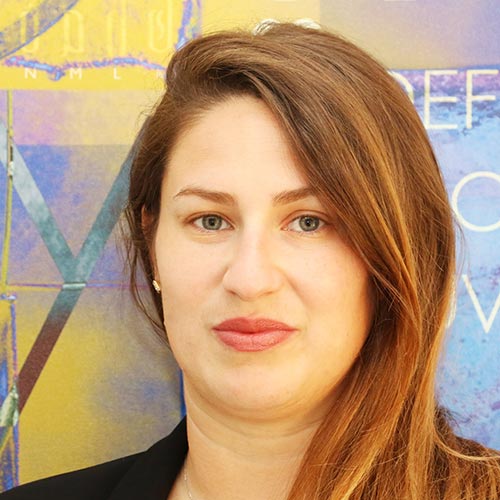
Farah al Mousa
Director PR, Talks
Though both advertising and digital and social media still take a larger share of ad budgets, there is a growing realisation that PR can be used as an effective tool to enhance brand awareness and deliver results. The silver lining is that economic challenges and budgetary constraints in the coming years are likely to open a bigger opportunity for strategic and smart PR to evolve and rapidly change into a digital one.
“Going forward, we will see more integration between the PR and the social and digital spheres, increasing the mix between traditional media and new media. However, only strategic thinking behind every brand and campaign will embrace this change and we have already started implementing it. We are now utilising platforms that not only include journalists but influencers that help affect the behaviour of people towards a certain brand or a company,” says Farah.
Looking ahead
Overall, there is unanimity on the fact that digital media gives a better return if it is pitched at the right people. Oman is doing quite a few things, but it still needs to focus on best practices and learn from other countries in the digital arena. Says Luiza: “There is a huge scope to grow. Local and regional players like Roumaan.com and Entertainer have exciting under-utilised innovation-led solutions for the Oman market available even now. And the new wave of website and app-based solutions hitting the market this year and next will bring a breath of fresh air to the local media scene.”
For the past couple of years, there is a definite shift in media spending with more marketing rials now being set aside for digital media as it’s more measurable, with data insights and analysis to guide every marketing decision. And this trend will continue, with more budgets moving towards digital solutions and innovations in the next few years. The advancements in digital technologies, adoption of automated solutions for online reputation management, social listening and online community management will further accelerate the shift of adspend towards new media.
Metrics matter, videos vital
The media landscape in Oman is keeping up with the global digital trends — but the marketers need to tap into new formats, such as video and affiliate marketing, and make up metrics that matter, says Yazan Taha.
Looking back four years ago when we had an increase in radio and TV adspend, we could see brands and agencies thrive and initiate the needed impact through traditional media channels where they were actually followed by the consumer consumption habits at that time,scoring higher GRPs through smart planning and the power of simple buying methodologies.
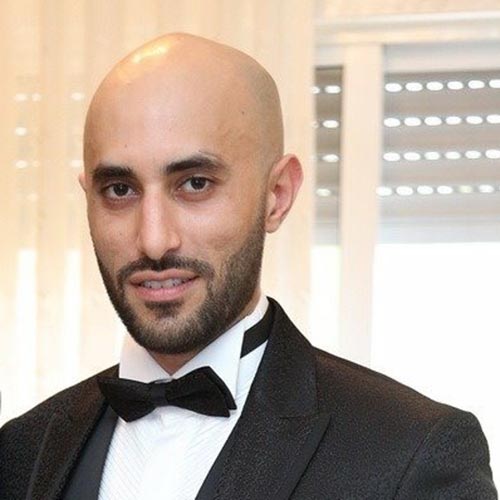
Yazan Taha
Digital Strategic Planner, SABCO Art
Brands used to pay a higher cost per user reached on traditional media, and a much more higher cost for the production of such creatives, TVCs and radio spots.
While that didn’t last long and the media landscape has dramatically changed, brands had to adapt to the new media world and its countless channels and tactics.Digital media has risen in its user consumption and the variety of its channels, methods and products due to advanced technologies and its rapid growth in the last decade.
World internet penetration has risen from 35 percent in 2012 to 50 percent in 2017 (Internet World Stats), while in the MENA region it has exceeded the world average and reached up to 60 percent with 19 million new internet users from 2016. In Oman, we are looking at a staggering 72 percent internet penetration. While this can be explained by the rising numbers of youth segments and the rapid development and enhancement of telecommunication and internet speeds, we can’t simply ignore the political changes, the impact of the recent Arab Spring and the need of connecting with people to share and provide opinion and content on what’s going on.
Moving to a more tactical point of view on digital media and how it correlates to some of the dying traditional media, we can compare the cost of unique users reached on both.While on traditional media the CPUU can be between 1.2-3 RO, on digital media it will not exceed 0.02 RO on average on most of the platforms due to the fact that the penetration is much higher and the frequency can be ultimately controlled. This is one factor that drives digital media over traditional media in terms of effectiveness.
Another important aspect of using digital media is that it is a clear, monitored and optimisation-friendly channel. With advanced technologies, we can track, optimise and effectively reach the audiences on a live basis and control our targeting to decrease the spillover of traditional ad views which will eventually save budgets from being spent ona low ROI basis.
Digital adspending has increased from 5 to 10 percent of the marketing mix in 2014 to 40 to 60 percent in 2017, and this is a reflection of its effectiveness compared to that of traditional media channels and to the higher ROI when implemented correctly with the right attribution models.
Oman digital media scene
The media landscape in Oman has changed dramatically in the past two years as the consumption has shifted to digital and, with a market that lacks powerful TV and radio stations, digital media has become the new product.
With a 72 percent internet, 151 percent mobile and almost 100 percent smartphone penetration, the market has grown and is keeping up with the world trend of transformation to smart devices and 24/7 connectivity. Most of the internet users in Oman are in the 16 to 35 age group and though most of them earn less than RO500 a month, this is not keeping them away from buying the latest in smartphones and spending significant amounts of money on data bundles, which is reflected on the income statements of Omani telecommunication companies.
When we dig deeper into the behaviour of Omani internet users, we see that 76 percent of them prefer to read news on a smartphone while 60 percent of the population read news online and more than 50 percent pay attention to social media ads and make a purchase decision based on those ads. To shed more light on the importance of the connected smartphones and search engines, the most activity being conducted on smartphones is search, social media and, lastly, reading news, in that order. It’s also important to take into consideration the significant time users spend networking on social media that reached four hours on average,according to the Mediate media consumption survey 2017.
Looking at those statistics, and in an adaptive market, we would expect an advertiser/client base that follows the trend, but unfortunately this is not happening completely in Oman.We are seeing an increase in digital adspend but not to the level where it should be.
Most of the market spenders are not allocating sufficient amounts of budgets to spend on digital media to the extent of helping them notice the difference and calculate the true return of their digital ad spending.This is due to the misconception that social media is all they have to care for and spend on.
Social media networks emerged 10 years ago with the rise of the powerhouse, Facebook, and a few more that followed, but the digital media universe is much more bigger and offers a lot more important channels, technologies and techniques to clients who seek to strengthen their positive business outcomes and feel the impact on their books and sales growth through digital advertising.
In a nutshell, social media is one part of a bigger digital media universe that contains admirable technologies such as programmatic buying, AI, video and affiliate marketing, and we can only say we will be a much more mature market if only we can fully adapt and follow users on their online journeys using the entire mix of digital media.This transformation will require an open mind, courage and a true reallocation of media budgets from top decision makers with a culture of innovation and creativity to the entire organisation.
New trends: Six-second video
Video advertising has become very important. Millennials and Gen Z are becoming lazier by the day with a shorter attention span, and this means one thing: advertisers need to adapt to that shift in behaviour and start promoting their brands through videos. Not any videos, but six-second videos.
Six-second video ads were rolled off by YouTube and called bumper ads initially and now Facebook and other big market players are optimising their platforms and ad offering to cater to that type of video ads. A number of well-known agency marketers claim it’s a way to force users to be more focused and a recent Google-led study on its bumper ads found that nine out of 10 of them drove ad recall, while 61 percent lifted brand awareness.
Some of the marketers who are strong supporters of such ad types say part of the theory is that if somebody hasn’t heard of you, they are not going to give you the time of day and this is where the six-second video ads come in.
You can retarget using 15 to 30 seconds video ads, but it is important to start with the six seconds that have a theory and a highly creative input.
Pushing for such ad formats into our client’s media plans is a strategy by itself but creating the story for it is a whole new and challenging game.
Consumer purchase funnel
Digital adspend in the region is rising, reflecting where consumers are increasingly spending their time – on their PCs and mobiles, always connected and always consuming. A double-digit growth in digital channels has been forecast by the IAB 2017 adspend report, with mobile growth to quadruple by 2020. The long-term question is: how can the digital advertising industry help brands get to a point where marketers are confident about every rial spent on digital media?
The answer lies in being better able to understand the relationship between marketing investment and business outcomes. Marketers have long coveted the ability to clearly connect campaigns and their contribution to marketing and overall business objectives, but it has remained elusive.
However, as technological capabilities improve, and digital media becomes a larger slice of the marketing mix, that possibility now seems tantalisingly within reach.
Developing this capability has to start with measuring the right behaviours and actions, doing so with the right foundation and framework in place.
This can be established by recreating what decisions and behaviours users go through on their journey to purchase a product or service and selecting the right metrics for each campaign objective.
Important rules for selecting digital measurement metrics:
Align your metrics to your campaign objectives:
Your campaign objective is to drive awareness. You should select only awareness-related metrics, such as reach percentage and brand awareness uplift percentage.
Avoid metrics that do not capture the impact meaningfully:
If your campaign is awareness or sales, CTR would not be a relevant metric, as it doesn’t directly link to the campaign KPI of reaching a high number of users to help increase the brand uplift metrics. It’s also useful to look at the behavioural metrics to provide a holistic view of the campaign performance, use page views per session or duration time.
If your campaign objective is sales, measure as closely as possible to the actual point of conversion:
For an auto manufacturer with a campaign objective of driving sales, consider measuring campaign success onthe basis of users successfully completing a “Test DriveRequest” form. In this case, optimise your campaign towards successful form completion.
Benchmark yourself against a consistent set of data and improve on it:
Benchmark based on your best-performing metrics you acquired earlier and made some good business sense, you can also find some benchmarks based on best industry case studies all over the web — challenge them and see why you are underperforming and work towards getting those results with a local twist to your customers’ behaviour.
Use independent third-party vendors:
Ad verification, brand safety and ad serving technology providers are a must in this era.
Advertisers should work with their agency partners to ensure full alignment on goals:
If the objective of your campaign is to drive awareness and the defined campaign KPI is reach percentage, then the internal marketing team and all partners should be aligned to this. The agency team will in turn be optimising the campaign towards this. CTR or other metrics may be of general interest, and it may be possible to glean insights from them — however, they would not be used to evaluate the performance of the campaign.

